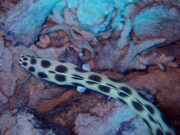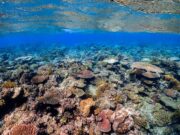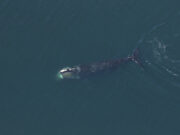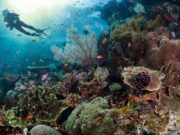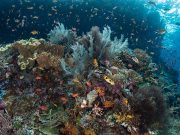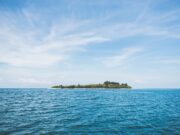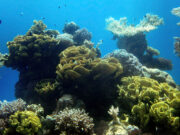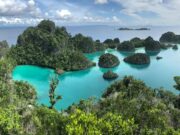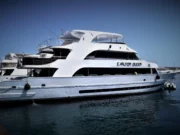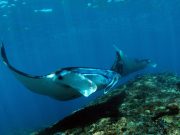Coral reefs often dominate discussions about top dive sites, but they are far from the only fascinating reef structures divers can explore. Other types of reefs, including granite, volcanic, artificial and rocky reefs, offer unique dive sites that combine geology, biodiversity, history and adventure. These reefs serve as important marine habitats and provide incredible opportunities for divers to encounter diverse marine life and stunning landscapes.
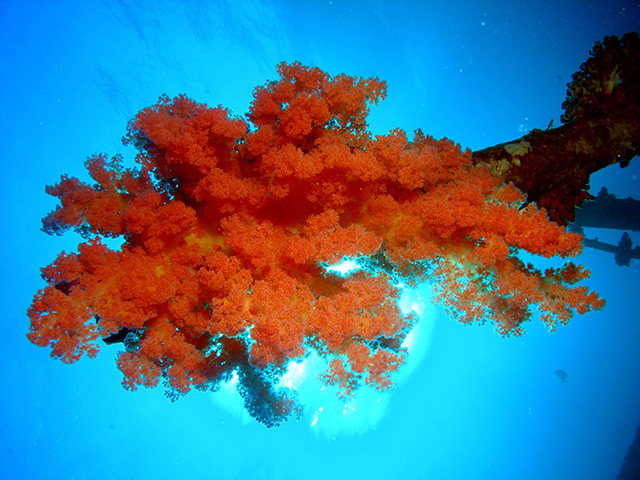
In this article, we investigate the features of non-coral reefs, their ecological importance and some of the best destinations to explore these alternative underwater worlds.
Contents
What Are Non-Coral Reefs?
Non-coral reefs are geological or man-made formations that support marine ecosystems without relying on coral polyps to create their structure. These reefs vary widely in composition and appearance, from rocky granite formations to artificial reefs created by sunken ships or other structures. Unlike coral reefs, which are biologically active and depend on coral growth, these reefs derive their significance from their geological history or their role in supporting marine habitats.
Types of Non-Coral Reefs
Granite Reefs
Granite reefs, formed by exposed granite outcrops, offer rugged underwater landscapes that support marine life. These reefs are typically found in areas with granite coastlines, such as the Seychelles. The granite structures typical of the Seychelles feature huge boulders, overhangs, and crevices where fish, crustaceans, and other marine creatures thrive.
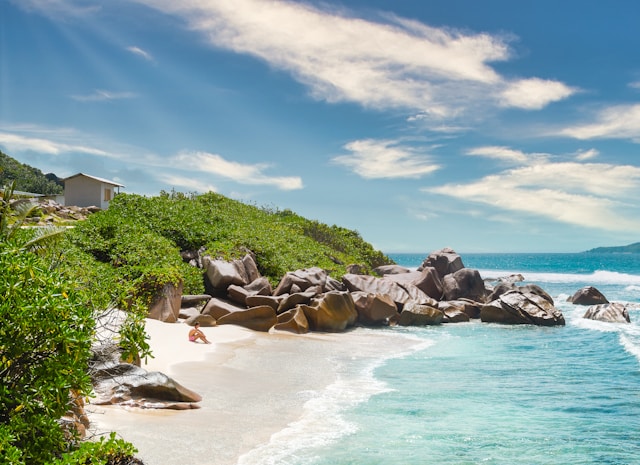
Volcanic Reefs
Volcanic reefs are formed around volcanic islands, where cooled lava flows and volcanic rock create dramatic underwater topography. These reefs, found in locations like Hawaii and the Canary Islands, feature lava tubes, pinnacles, and steep walls. Volcanic reefs are known for their vibrant marine ecosystems and unique lava formations.
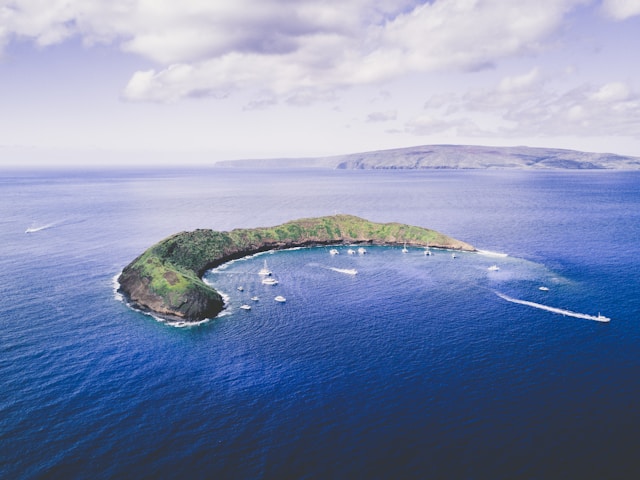
Artificial Reefs
Artificial reefs are created by sinking ships, airplanes, or other structures to provide habitats for marine life. These reefs quickly attract fish, corals, and other organisms, transforming barren sea floors into thriving ecosystems. Notable examples include the USS Spiegel Grove in Florida, the Zenobia wreck in Cyprus, the Thistlegorm in Egypt, and Truk Lagoon – a wreck diving mecca on many divers’ wish lists.
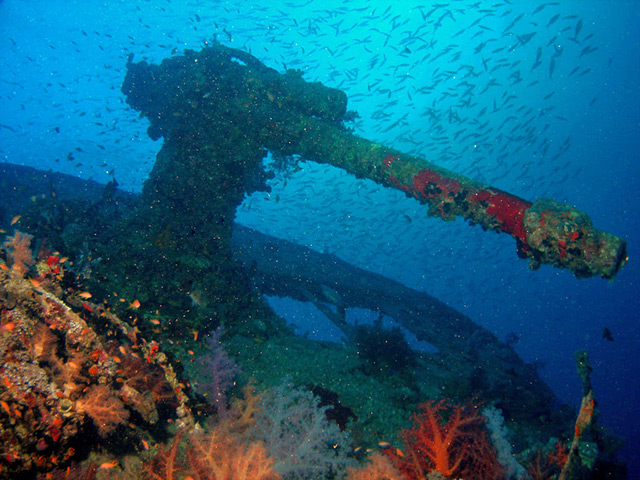
Rocky Reefs
Rocky reefs, found in colder waters, consist of natural rock formations rather than coral. These reefs are common in temperate regions, such as the Pacific Northwest and South Africa. They are often covered in kelp forests and support diverse marine life, including fish, small sharks, sea urchins, and sponges.
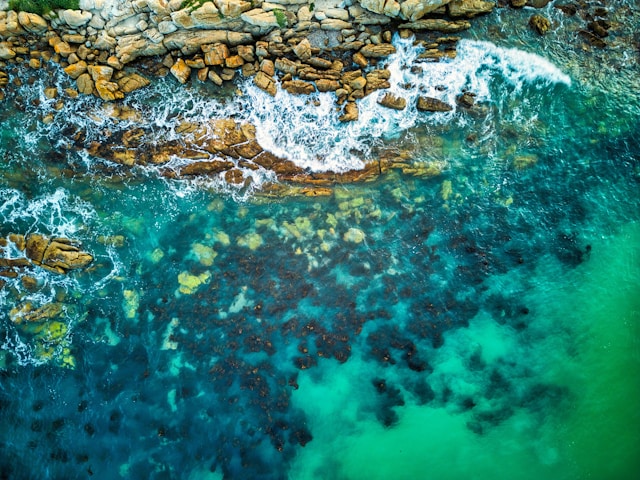
Shell Reefs
Shell reefs are formed by the accumulation of shells, such as oyster reefs. While less commonly dived, these reefs are ecologically significant, providing habitats for marine species and helping to filter and clean coastal waters. Examples can be found in estuaries like Chesapeake Bay in the USA.
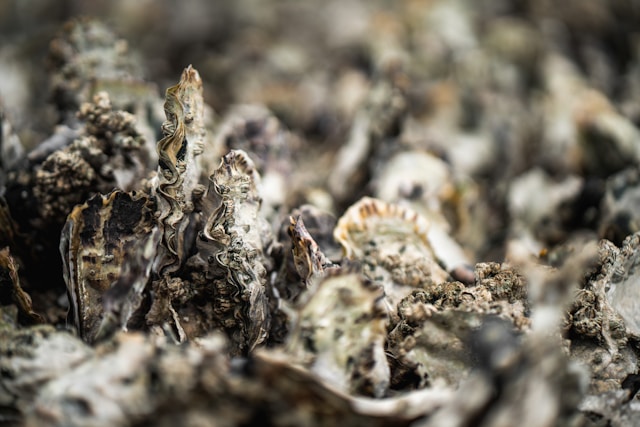
Fossilised Reefs
Fossilised reefs are ancient reefs that have turned to stone over millions of years. These reefs provide a glimpse into prehistoric marine ecosystems and can often be found in areas with limestone bedrock, such as parts of the Florida Keys.
Marine Life at Non-Coral Reefs
Non-coral reefs support a wide array of marine species, depending on the type of reef and its location. Granite reefs attract fish like groupers and snappers, as well as lobsters and crabs hiding in crevices. Volcanic reefs often host colourful reef fish, octopuses, and larger pelagic species like sharks. Artificial reefs quickly become bustling habitats for marine life, with schooling fish, sponges, and soft corals covering their surfaces. Rocky reefs in colder waters are often home to kelp forests, sea stars, and unique cold-water fish species.
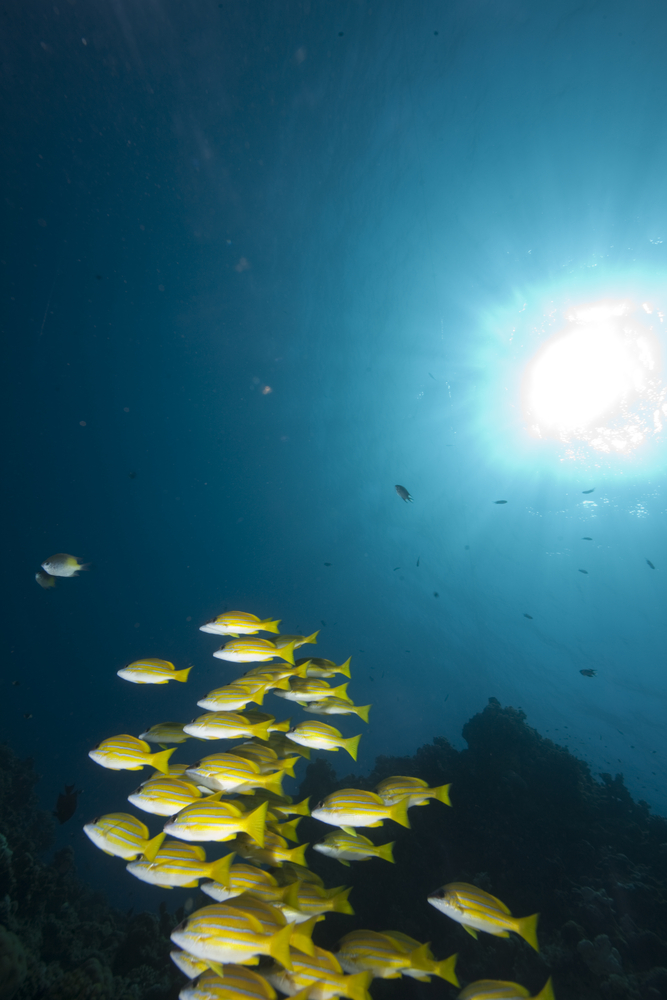
Top Non-Coral Reefs to Explore
1. Granite Reefs, Seychelles
The granite formations of the Seychelles create dramatic underwater landscapes featuring plateaus, massive boulders, and large coral formations. Sites like Shark Bank offer divers the chance to explore rocky outcrops teeming with reef fish, rays, and occasionally whale sharks.
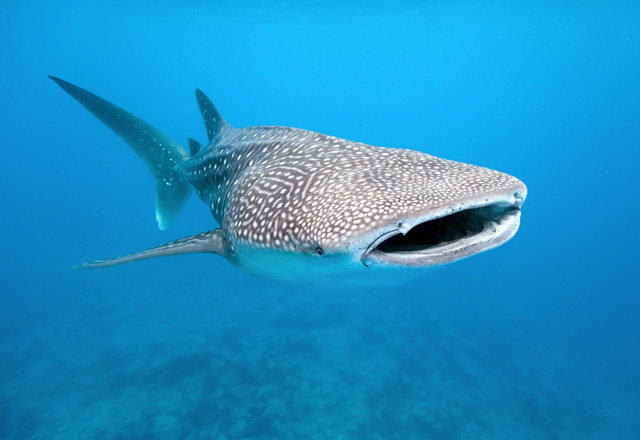 Image: Deposit Photos
Image: Deposit Photos2. Volcanic Reefs, Hawaii
Hawaii’s volcanic origins are evident in its underwater topography. Diving in Hawaii features stunning lava formations where marine life thrives. Hawaii’s waters are home to an extraordinary amount of endemic marine life, with over 25% of its reef fish species found nowhere else on Earth, making dives here truly one-of-a-kind.
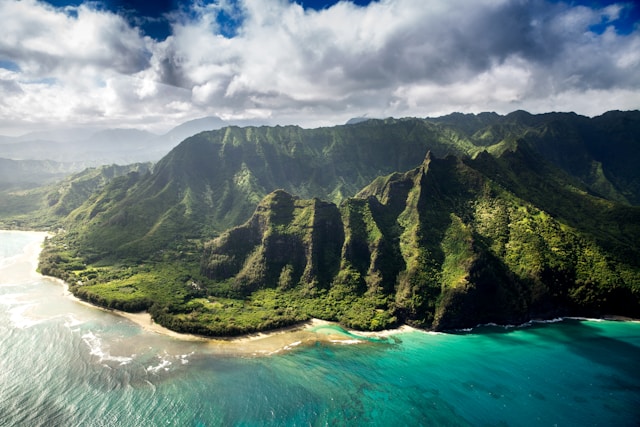
3. Artificial Reefs, Egypt
Diving in Egypt boasts some of the most iconic natural and artificial reefs in the world. The SS Thistlegorm, a WWII cargo ship, is a must-visit for its intact artifacts and thriving marine life. The Dunraven, an old steamship, offers a hauntingly beautiful dive site teeming with reef fish and soft corals. At Abu Nuhas, divers can explore multiple wrecks, including the Giannis D and the SS Carnatic, a British steamer that sank in 1869.
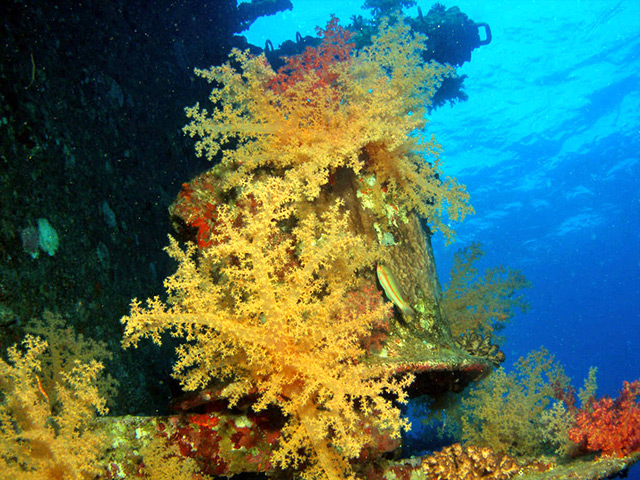
4. Rocky Reefs, South Africa
South Africa’s rocky reefs, such as those in Sodwana Bay, are vibrant ecosystems covered in sponges and algae. These reefs support a range of marine species, from nudibranchs to reef sharks. Additionally, the rocky reefs around Simon’s Town offer stunning dives among granite reefs with sandy patches and sunlit kelp forests. The area supports a diverse ecosystem, featuring puffadder shysharks, leopard catsharks, gully sharks, and gas flame nudibranchs.
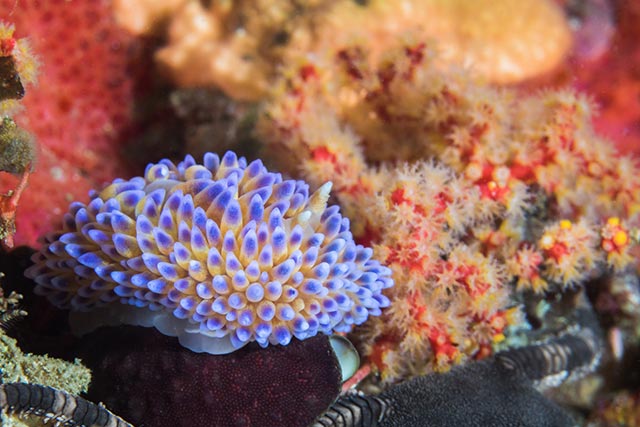
5. Shell Reefs, Chesapeake Bay, USA
The oyster reefs of Chesapeake Bay are critical habitats for marine life and also improve water quality by filtering large volumes of water. While not commonly dived, they play an essential role in coastal ecosystems and are a growing area of interest for conservation divers.
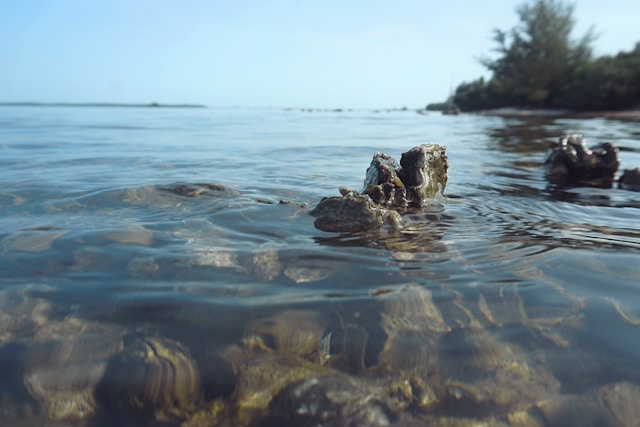
6. Fossilised Reefs, Florida Keys
The fossilized coral reefs of the Florida Keys, such as those around Windley Key Fossil Reef Geological State Park, provide a unique opportunity to explore ancient marine ecosystems. These structures, preserved over millions of years, showcase fossilized coral formations and support a variety of marine life today.
7. Lava Reefs, Canary Islands
The Canary Islands boast stunning volcanic formations that form unique lava reefs. These dramatic underwater landscapes – with caves, arches and large groups of hexagonal pillars – are home to a variety of marine species, including rays and groupers. Dive sites like Atlantis at Los Gigantes, in Tenerife offer unforgettable dives.
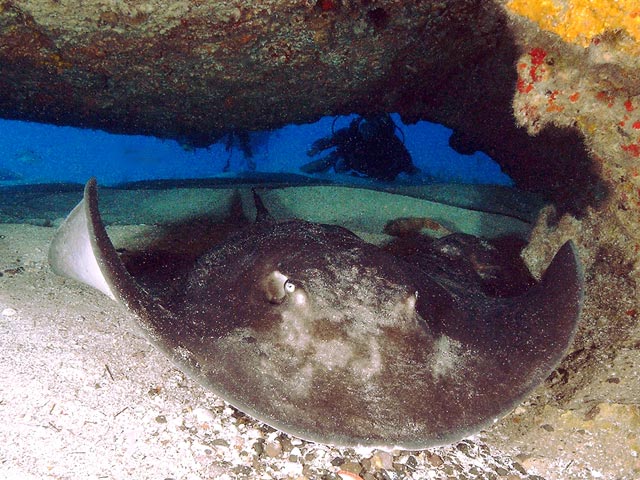
8. Shingle Reefs, Tasmania, Australia
Tasmania’s coastal waters feature rare shingle reefs composed of smooth, compacted gravel and rock. These unique reefs are found in shallow waters and support a surprising array of marine life, including reef fish and weedy seadragons.

Threats to Non-Coral Reefs
Non-coral reefs face many of the same threats as coral reefs, including overfishing, pollution and climate change. Divers can play a role in their protection by practicing sustainable diving techniques, such as maintaining perfect buoyancy, avoiding contact with reefs, using reef-safe sunscreen and participating in conservation efforts.
This article was written by Kathryn Curzon, a dive travel writer for SSI.
Image credits:
- Whaleshark: Deposit Photos

